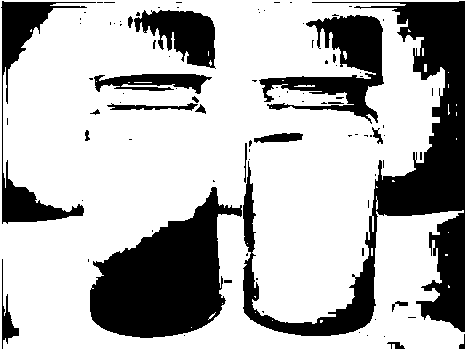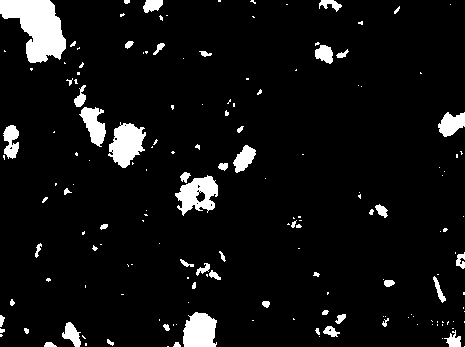Method for optimizing tunicatecellulose preparation
A technology of nanocellulose and cellulose, applied in chemical instruments and methods, liquid crystal materials, etc., can solve the problems of high requirements for reaction equipment, high energy consumption, waste of resources, etc., achieve simple and effective yield, simple process method, reduce Equipment requirements and effects on production costs
- Summary
- Abstract
- Description
- Claims
- Application Information
AI Technical Summary
Problems solved by technology
Method used
Image
Examples
Embodiment 1
[0016] (1) Take 100g of bulk sea squirt cellulose and 1L of water and pour them into the ball mill. After grinding for 1 hour, the temperature inside the mill will rise due to friction. It needs to be shut down for 15 minutes to cool down to room temperature, and then grind again. Repeat the above steps three times.
[0017] (2) Pour out the ground sea squirt cellulose slurry, centrifuge with a centrifuge at 12,000 rpm, remove the supernatant, and keep the precipitate.
[0018] (3) Take 10 g of the precipitate and mix it with 175 ml of concentrated sulfuric acid with a concentration of 64 wt %, and heat and react in an oil bath at 45 ° C for 5 h with magnetic stirring.
[0019] (4) Add 800ml of deionized water to stop the reaction, centrifuge with a centrifuge at 12000rpm, remove the supernatant, wash with deionized water and then centrifuge, repeat the operation three times.
[0020] (5) Put the centrifuged sediment into a dialysis bag and dialyze with deionized water until t...
Embodiment 2
[0024] In the step (1), the dosage of the lumpy ascidian cellulose is 0.01-10 kg, and the rest of the steps are the same as in Example 1.
Embodiment 3
[0026] The amount of water used in step (1) is 0.1-10L, and the rest of the steps are the same as in Example 1.
PUM
 Login to View More
Login to View More Abstract
Description
Claims
Application Information
 Login to View More
Login to View More - R&D
- Intellectual Property
- Life Sciences
- Materials
- Tech Scout
- Unparalleled Data Quality
- Higher Quality Content
- 60% Fewer Hallucinations
Browse by: Latest US Patents, China's latest patents, Technical Efficacy Thesaurus, Application Domain, Technology Topic, Popular Technical Reports.
© 2025 PatSnap. All rights reserved.Legal|Privacy policy|Modern Slavery Act Transparency Statement|Sitemap|About US| Contact US: help@patsnap.com



